Saxophone Care and Maintenance
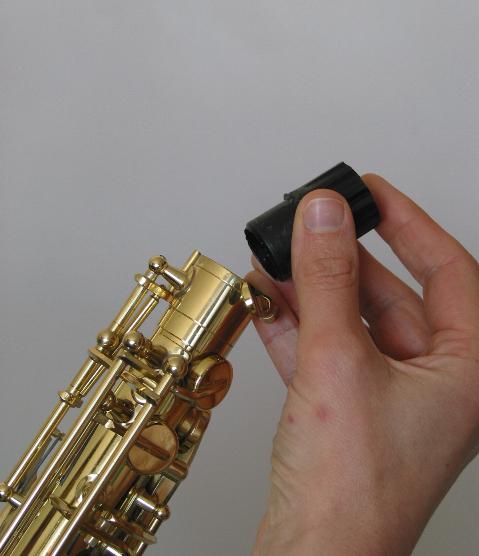
A saxophone should always be held by the bell. The reason is simple. If you do not touch the keys, you will not bend the keys. The reason for the need of most sax repairs is bent keys. So remember one thing. Don't bend the keys! If you bend the keys the pad will no longer come down flush with the tone hole and the hole will not be sealed. This will result in air leakage. The keys are like little doors and they must seal the tone holes perfectly. It they do not seal the tone holes, the sax will play poorly or not at all. Any bump or damage to the posts holding the keys will also result in misaligned keys and again the pads will not seal the tone holes.
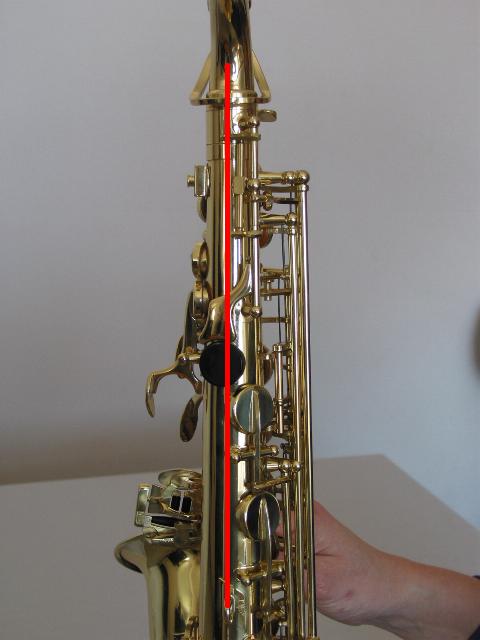
The bell is a good solid place to hold the saxophone when you are not playing it and when you are taking it out or putting it back into its case.
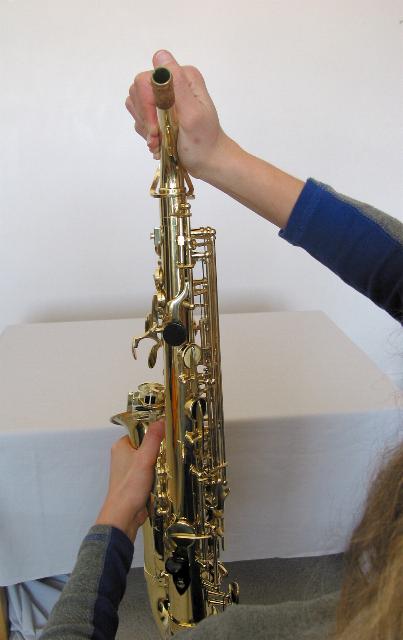
Holding the sax with your other hand on the bottom bow is also a good idea.

The end plug is critical. It serves to protect the octave pin that usually sticks out past the top of the sax. This octave pin can be easily damaged even in the case.
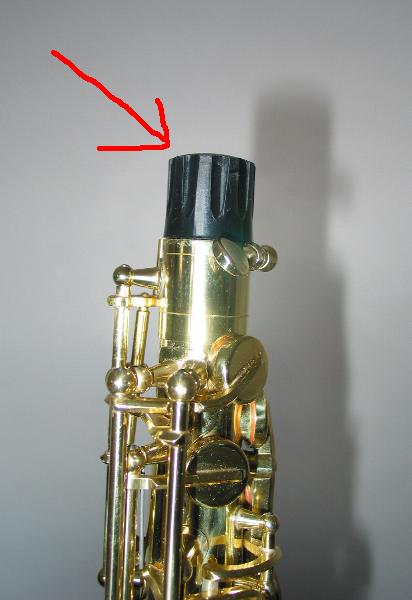
If the sax bounces around in the case or if the weight of the sax is on the octave pin then it may get bend and will not open or close the neck octave key. This will result in your sax not playing properly or not at all.

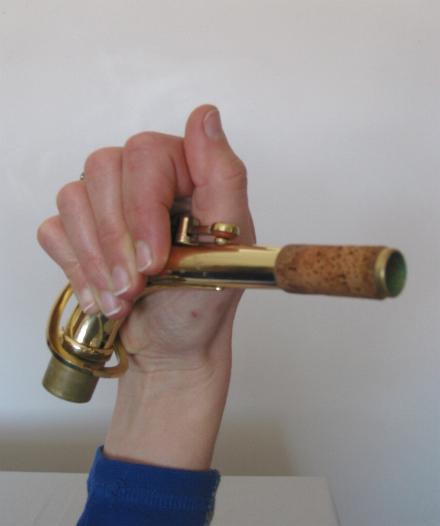


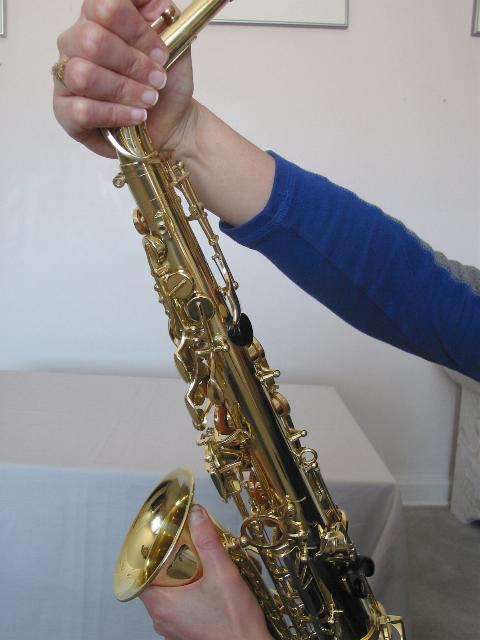


The center of the neck, which is also the center of the reinforcement bracket, should always be lined up with the strap eyelet. After you line it up correctly, just tighten the neck screw so that the neck does not move around.
This is interesting: Take a look what the Selmer Owner's Manual says
I sold a professional Selmer Paris saxophone recently and I read through the owner's manual.
Here is what they say in very poor English (I made it read better). Most of this is common sense and you do not have to be a genius to figure it out.:
1. Clean the outside of your saxophone after playing it. Do not leave a swab inside the body.
Selmer knows how dangerous "Padsaver" swabs are to your instrument. These great moneymaking inventions do the complete opposite to what is good for your instrument. They keep the moisture in the sax, instead of removing it.
2. Do not keep the case closed when the instrument is wet. The humidity will damage the instrument.
These guys at Selmer are smart. They say exactly what I say. Keep the lid of your sax case open several times a week overnight to let the instrument breath and dry out naturally. Put it on a shelf or a table in a safe spot away from little kids and pets and let the instrument ventilate.
3. Put the sax on a stand or lay the instrument on the key guards. Never lay the instrument on the "spatula key cluster" (left hand little finger) This will easily bend these keys.
The only thing I don't agree with here is the idea of putting your sax on a stand. Its just simply too dangerous. You will knock off your sax guaranteed. It's just a matter of when.
4. If you wish, you can plug the open keys.
This is only optional. What they mean here is that if you will store your instrument for a long period, you can use pieces of cork or whatever to close the open keys. Keeping them closed will compress and seat the leather pads over an extended time. All saxophones are shipped when new with all the open keys closed. I always remove these rubber and cork wedges to play test the instrument before its sold. You do not have to perform this unless you are a fanatic and will store your instrument for a long time.
5. Never pick up a saxophone by the neck.
I have run across this irresponsible act many times when students pick up the instrument by the neck and the neck slips out of the instrument and sends your saxophone crashing to the ground. Not very smart. If my kid ever did that I would probably be arrested for child abuse soon after.
6. While putting the mouthpiece on the neck always hold the neck tight to avoid warping.
It sometimes takes a lot of pressure to put on the mouthpiece, especially when the sax is new and the cork has not been compressed or well lubricated. So don't forget to use cork grease and hold the neck securely while applying pressure putting on the mouthpiece. Your neck can suddenly bend if you are rough with it. Again it just takes a bit of common sense.
7. Before picking up your case, please make sure that it is correctly closed.
As silly as this sounds, it could happen. You may be in a hurry and you forget to close the latches of the case. The next thing you know is that your beautiful new saxophone went crashing to the ground. How will that make you feel?